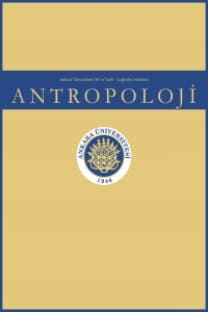Antik DNA Çalışmaları ve Karşılaşılan Sorunlar
İleri derecede zarar görmüş ve DNA eldesi için özel koşullarda saklanmamış biyolojik örneklerden DNA elde edilerek gerçekleştirilen moleküler genetik çalışmaları “antik DNA çalışmaları” olarak adlandırılır. Moleküler biyoloji alanında ortaya konulan gelişmeler paralelinde pek çok bilimsel soruna ışık tutacak olan antik DNA çalışmaları, uygulamada standart moleküler genetik çalışmalarına kıyasla farklı hassasiyetler gerektirmektedir. Örneklerin elde edilmesinden laboratuvarda gerçekleştirilen birçok aşamaya kadar pek çok farklı bilim dalından insanın ortak çalışmasını gerektiren bu araştırmalar, sonunda evrimsel ve antropolojik sorulara çözüm sunacak güçtedir. Bu makalede antik DNA çalışmalarının önemi ve çalışma süresince karşılaşılan sorunlar ve çözüm önerileri üzerinde durulacaktır
Ancient DNA
DNA studies from highly degraded biological samples that are not preserved in suitable conditions for DNA analyses are called “ancient DNA analyses” Ancient DNA studies may shed light on many scientific issues in parallel with the improvements of the field of molecular biology, however it requires a higher level of sensitivity during applications when compared to standard molecular genetic studies. These researches raises the need for a collaborative work of scientists from different disciplines to carry out several explorative stages; initiating from sample collection to laboratory analyses which finally provides solutions on the evolutionary and anthropological hypothesis. The aim of this article is to focus on the importance of ancient DNA studies, discuss the problems encountered during these studies and provide solution proposals to overcome these problems
Keywords:
ancient DNA degradation, contamination,
___
- Alakoc YD., Aka PS. (2009) “Orthograde Entrance Technique To Recover DNA From Ancient Teeth Preserving The Physical Structure.” Forensic Sci Int. 2009 Jul 1;188(1-3):96-8.
- Alakoc, Y. D., Aka P. S., , Eğin Y, Akar N. (2010). "V Leiden in an Urartian, dating Back to 1000 BC”. Journal of the International Academy of Clinical and Applied Thrombosis/ Hemostasis (Clin Appl. Tromb Hemost) 16 (6):679-83.
- Bouwman, A. S., Chilvers E. R., Brown K. A., Brown T. A. (2006). "Brief communication: identification of the authentic ancient DNA sequence in a human bone contaminated with modern DNA." Am J Phys Anthropol 131(3): 428-31.
- Germonpore M., Sablin M.V. et al. (2009).” Fossil dogs wolvesfrom Palaolithic sites in Belgium, the Ukraine and Russia: osteometry, ancient DNA and stable isotopes” Journal od Archaelogical Science 36:473-490.
- Halle J., Froese GG, et al (2009). “Ancient DNA reveals late survival of mammoth and horse in interior Alaska” PNAS 106 (52): 22352-57.
- Higgins D., Austin J. (2013). “ Teeth as a source of DNA for forensic identification of human remains”.Science and Justice. 53:413-441.
- Higuchi, R., B. Bowman, et al. (1984). "DNA Squences from quagga, an extinct member of the horse family." Nature 312: 282-284.
- Hummel S. (2007). “Ancient DNA” . Handbook of Paleoantropology. Springer: 643-671.
- Kirsanow K. ve Burger J. (2012). “Ancient human DNA” Annals of Anatomy 194: 121-132.
- Meyer, E., M. Wiese, et al. (2000). "Extraction and amplification of authentic DNA from ancient human remains." Forensic Sci Int 113(1-3): 87-90.
- Pääbo S. (1985). “Molecular Colning of ancient Egyptian mummy DNA” Nature. 314: 644-645.
- Pruvost, M., R. Schwarz, et al. (2007). "Freshly excavated fossil bones are best for amplification of ancient DNA." Proc Natl Acad Sci U S A 104(3): 739-44.
- Rohland, N. and M. Hofreiter (2007). "Ancient DNA extraction from bones and teeth." Nat Protoc 2(7): 1756-62.
- Schubert, M., Ginolhac A., Thompson J., Al- Rashid K., Willerslev E., Krogh A. and Orlando L. (2012) “Improving ancient DNA read mapping aganist modern genomes”. BMC Genomics: 13:178.
- Von Wurmb-Schwark, N., M. Harbeck, et al. (2003). "Extraction and amplification of nuclear and mitochondrial DNA from ancient and artificially aged bones." Leg Med (Tokyo) 5 Suppl 1: S169-72.
- Yang, DY. ve Watt, K. (2005). "Contamination controls when preparing archaeological remains for ancient DNA analysis." Journal of Archaeological Sceince 32: 331-336.
- ISSN: 0378-2891
- Yayın Aralığı: Yılda 2 Sayı
- Başlangıç: 1963
- Yayıncı: Ankara Üniversitesi Basımevi
Sayıdaki Diğer Makaleler
Kongre Değerlendirmesi: Uluslararası Antropoloji Bilimleri Kongresi (ICAS2015)
Ayla SEVİM EROL, Ceren AKSOY SUGİYAMA
Prof. Dr. Metin Özbek'in Özgeçmişi ve Çalışmaları
Geçmişten Günümüze Geleneksel Anadolu Mutfak Kültürünün Gelişimi
Galip AKIN, Vahdet ÖZKOÇAK, Timur GÜLTEKİN
Olay Yerine Adli Arkeolojik Yaklaşım ve Gömü Tipinin Önemi
Antik DNA Çalışmaları ve Karşılaşılan Sorunlar
Adli Kimliklendirmede Yaşa Bağlı Olarak Yüz Bölgesinde Görülen Morfolojik Varyasyonlar
